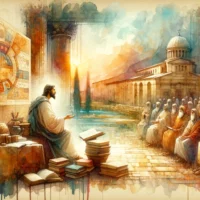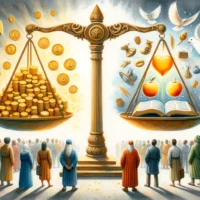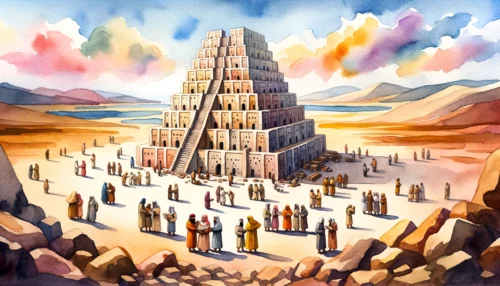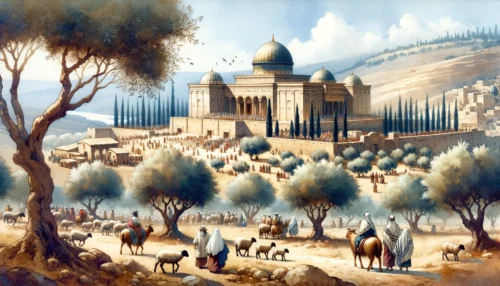It’s no secret that the Bible, rich in history, wisdom, and spiritual insights, is not always an easy book to comprehend. The multitude of layers in its composition, its cultural and historical context, and the linguistic nuances all contribute to making it a book that requires patience, persistence, and prayer to interpret correctly. We want to affirm you in your struggle, because you are not alone. The fact that it is challenging to understand at times is not a sign of your failing but an indication of the depth of wisdom that it holds, a treasure worth digging into.
The Complexity of Biblical Language and Metaphors
When we open the pages of the Bible, we are confronted with a rich tapestry of language and metaphors, which can, at times, seem overwhelming in their complexity. This is not a casual read, nor was it intended to be.
Consider the original languages of the Bible. Written primarily in Hebrew, Aramaic, and Greek, the original texts were filled with idiomatic expressions and symbolic language that were intimately familiar to the original readers but can seem strange and obscure to us. Think of it as trying to understand a joke from another culture; without an understanding of the underlying assumptions, traditions, and context, it just doesn’t land the same way. This can make certain passages difficult to understand without a study of the original languages and their idioms (e.g., Proverbs 13:12).
In addition to the original languages, there is a wealth of metaphorical language used throughout the Bible. This metaphorical language is used to express complex spiritual realities in a way that is accessible and relatable. These metaphors can often be challenging because they draw on images and experiences from the ancient world, a reality far removed from our own. For example, the metaphor of Christ as the shepherd (John 10:11) requires an understanding of the shepherd’s role in ancient Near Eastern societies.
Beyond individual words and metaphors, there is also the issue of genre. The Bible contains a wide array of genres, including historical narrative, poetry, prophecy, wisdom literature, epistles, and apocalyptic literature. Each of these genres has its own conventions and ways of communicating truth. A poem does not express truth in the same way a historical account does; a prophecy is not intended to be read in the same way as an epistle. Understanding the genre of the text we’re reading can provide crucial clues to its interpretation.
Consider also the role of literary devices. The Bible uses various rhetorical and literary devices, such as parallelism, chiasmus, and hyperbole, to drive home its points. The use of such devices often underscores the theological truths the authors intended to communicate. Recognizing and understanding these devices can add layers to our understanding and interpretation.
The complexity of the Bible’s language and metaphors forms a significant part of the challenge in understanding the text. The Bible’s original languages are rich and nuanced, containing idiomatic expressions and symbolic language that need careful study. Metaphors are used to articulate spiritual truths in relatable terms, yet these are deeply tied to the context of the ancient world. The Bible’s diverse genres each require a distinct approach for interpretation. Literary devices such as parallelism and hyperbole serve to highlight theological truths. All these factors make for a reading experience that demands a significant investment of time, study, and thoughtful reflection.
Historical and Cultural Background: A Key to Understanding
Imagine reading a letter addressed to someone else, written in a different era, in a distinct culture. Understanding the full scope of its meaning would indeed be a challenging task. This analogy reflects our experience with the Bible, composed over centuries within unique historical and cultural settings.
The Bible was composed within a span of over a thousand years, from different regions in the Middle East. These societies had distinct customs, laws, and traditions, a far cry from our current context. The Old Testament law, for instance, prescribed certain dietary restrictions (Leviticus 11), which can seem strange unless we understand the cultural and historical contexts that shaped these laws.
Relating to this, Biblical authors often drew from their immediate surroundings to illustrate spiritual truths. For instance, agricultural metaphors are plentiful in the Bible. The parable of the sower (Matthew 13:1-9) conveys truths about the Kingdom of God using farming analogies that were easily comprehensible to an agrarian society but might seem less familiar to a modern urban reader.
Historical events also play a significant role in shaping the Bible’s narrative. The exile of the Israelites to Babylon had profound implications for the way they understood their relationship with God, which is reflected in books like Isaiah and Jeremiah. Similarly, the first-century Roman context significantly shaped the writing and interpretation of the New Testament.
Even within the Bible, understanding the historical sequence of books is essential. Reading the books in their chronological order provides insights into the unfolding narrative of God’s interaction with humanity. For example, appreciating the historical events leading up to the time of Jesus gives us a better understanding of the New Testament.
Geographical understanding is also important. Many events in the Bible are tied to specific geographical locations, which carry their own symbolic significance. For example, Jerusalem’s significance in Biblical narratives is deeply intertwined with its historical and geographical characteristics.
Understanding the Bible necessitates an appreciation of its historical and cultural backdrop. It was written over a long period within specific societies with their customs and traditions. Biblical authors used metaphors from their environment, which might seem unfamiliar to modern readers. Significant historical events like the Babylonian exile and the Roman occupation of the first century shape the narrative and context of the Bible. Understanding the chronological sequence of books and the geography of Biblical events can greatly enrich our comprehension of the scriptures.
Navigating Personal Interpretations and Theological Discrepancies
A significant part of the challenge in understanding the Bible lies in the realm of personal interpretation and theological discrepancies. Our own biases, experiences, and theological backgrounds can shape how we understand the scriptures. Not all Christians interpret every passage in the same way, leading to a diversity of beliefs within the Christian community.
Each of us approaches the Bible with our own set of assumptions and experiences that can influence how we interpret its passages. For example, our cultural background might lead us to focus on certain aspects of a text while overlooking others. This can be a stumbling block if we’re not aware of these biases and don’t take the time to challenge them.
There are areas in scripture where honest, well-meaning Christians may disagree. These might include topics like the nature of predestination (Romans 8:29-30), the role of women in church leadership (1 Timothy 2:12), or the details of the end times (Revelation 20:1-6). These disagreements don’t undermine the fundamental truths of Christianity, but they can create confusion when we’re trying to understand the Bible.
The Bible might also appear to contain discrepancies or contradictions. Usually, these apparent discrepancies can be resolved with a deeper understanding of the context and genre of the passages in question. For example, the four gospels sometimes present different accounts of the same events, but this is often due to the unique perspectives and purposes of each gospel writer.
Interpreting the Bible isn’t about winning arguments or proving a point; it’s about seeking to understand God’s revelation to us. This requires humility, a willingness to learn from others, and a dependence on the Holy Spirit for guidance. We must approach our reading with prayer, asking God to open our hearts and minds to understand His word.
Personal interpretations and theological discrepancies contribute to the challenges in understanding the Bible. Our biases and experiences can shape our interpretation, and well-meaning Christians may disagree on certain topics. Additionally, apparent discrepancies in scripture often require deeper contextual understanding. Despite these complexities, the goal remains to understand God’s revelation to us, a journey requiring humility, learning, and dependence on the Holy Spirit.
Perseverance in Pursuit of Truth
The complexity of understanding the Bible is a reality we’ve all faced. Its richness of language, intricate metaphors, deep cultural and historical roots, and the labyrinth of personal interpretations and theological nuances may appear daunting. Yet, these intricacies reflect the profound wisdom the Bible holds. As we diligently and prayerfully engage with scripture, we find the Bible unraveling itself to us, revealing timeless truths about God and His relationship with humanity. It is within these pages that our faith is built, nurtured, and fortified.
Questions to consider:
- How might your cultural and personal biases affect your interpretation of the Bible?
- What steps can you take to better understand the historical and cultural contexts of the Bible?
- How can you approach theological discrepancies with humility and a willingness to learn?
The Bible, with its complexity, invites us to persist in our pursuit of understanding. Every page turned, every verse meditated upon, draws us closer to the heart of God. May you find strength and encouragement in your diligent study, knowing that the wisdom and knowledge gained will be a lamp to guide your steps and a light for your path.














